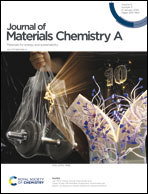Optimizing CO2 photoreduction on bismuth oxyhalides via intrinsic and extrinsic techniques†
Abstract
Bismuth oxyhalide (BiOX) layered materials have been widely applied in photocatalytic CO2 reduction (PCR) because of their redox potential flexibility, defect tolerability, and particularly inherent internal electric field (IEF)-assisted charge separation. Recently, inherent deficiencies in BiOX, resulting in limited PCR activity, have been addressed using diverse techniques. However, a concise review uncovering how these techniques led to PCR enhancement is lacking. Considering this, we first segregated the techniques based on without (intrinsic) and with (extrinsic) the aid of foreign atoms/or molecules in the structure of BiOX and then exclusively interrelated the carrier kinetics modulations, active site exposure, and underlying mechanisms with PCR optimization. Examples of intrinsic techniques include morphological modulations, thickness tailoring, vacancy engineering, Bi-rich tactics, facet reorganizations, van der Waals-gap engineering, IEF adjustability, concave-rich structure, hollow-structure formation, and pit engineering. Extrinsic techniques cover metal/non-metal/single-atom doping, homo-/hetero-structure construction, solid-solution formation, and co-catalyst incorporation. Furthermore, the superiority of intrinsic techniques is highlighted with a detailed PCR activity comparison, and finally, key challenges, prospects, and distinct recommendations are presented. This review offers a conceptual visualization of PCR optimization and stipulates supplementary assistance for the development of diverse materials.

- This article is part of the themed collection: Journal of Materials Chemistry A Recent Review Articles


 Please wait while we load your content...
Please wait while we load your content...